Getting to know cannabis
A marijuana consumer exhales smoke on April 20.
April 20, 2020
Updated April 22, 2020.
As cannabis use gains popularity across the United States, Americans across the nation have taken to social media to express how the stay-at-home order has created the ultimate opportunity to enjoy a little green. Having fewer responsibilities and limited places to go, people across the country are preparing to spark up for April 20.
April 20, the unofficial stoner holiday known as 420, has prompted hundreds of pot-related discussions across the web as first-time users try to navigate the confusing world of cannabis. In an effort to help new and experienced stoners alike celebrate safely, continue below to learn more about the legal history of cannabis, its impact on our health, and how it is consumed.
The complicated legal history of cannabis
From before the Revolutionary War until the 1880’s, hemp from cannabis plants was considered a critical industrial crop; it was subsidized by the government in the same way corn and wheat are today. Medicines made from hemp were widely available in a variety of preparations.
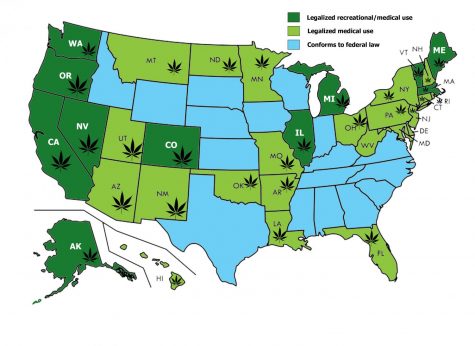 The last twenty years of the nineteenth century saw many cultural and demographic changes in the United States. After the Civil War, many municipalities generated laws intended to criminalize Americans of color. Using cannabis as a scapegoat, they claimed it made minorities into uncontrollable monsters with a bloodlust for sex with white women.
The last twenty years of the nineteenth century saw many cultural and demographic changes in the United States. After the Civil War, many municipalities generated laws intended to criminalize Americans of color. Using cannabis as a scapegoat, they claimed it made minorities into uncontrollable monsters with a bloodlust for sex with white women.
By the 1930’s, feature-length films such as “Reefer Madness,” “Assassin of Youth,” and “Devil’s Harvest” were repeating the myth that smoking cannabis makes people irretrievably and criminally insane, allowing the government to regulate the farming and sale of cannabis. In 1937, the Department of Agriculture began issuing tax stamps to farmers who were allowed to grow hemp, but the government failed to issue any of those tax stamps, and hemp went from being an important industrial crop in America to being virtually illegal to produce.
The law against farmers producing cannabis was lifted during World War II, as the war effort relied on the inexpensive, durable goods that can be made from hemp. Hemp was used to make everything from ropes and uniforms to parachutes and bandages. U.S. farmers found themselves again being encouraged and paid to produce valuable hemp for the government.
As the U.S. government ramped up the war effort in Southeast Asia in the late 1950’s and early 1960’s, many of the young people who were drafted opposed the war. As cannabis use was common among them, the government responded by once again connecting cannabis use to undesirable behavior, claiming that cannabis led to meek, passive, and lazy people.
President Richard Nixon signed Title II of the Comprehensive Drug Abuse Prevention and Control Act of 1970, which, among other things, reclassified cannabis as a Schedule 1 drug, defined as having “no currently accepted medical use and a high potential for abuse,” where it remains today according to DEA.gov/drug-scheduling. Other substances in this category include heroin, LSD, and peyote.
Today, 33 individual states have independently passed legislation decriminalizing the production, sale, and possession of cannabis to some degree. In 11 of those states, including California, recreational cannabis is decriminalized for anyone over the age of 21 and is regulated much like alcohol. Other states have chosen to allow medical use, and have implemented a medical recommendation system for patients and registration program for growers and dispensaries. Some of these states, like Illinois and Colorado, have seen incredible increases in their state revenues as a result of allowing this commerce.
The impact of cannabis on health
As the research surrounding cannabis consumption is still limited, it is important to consider all currently known information before making the decision to join someone’s smoke session or grabbing a brownie.
At this time, it is believed that marijuana can help provide relief for a variety of health conditions, including chronic pain, insomnia, and loss of appetite. These benefits have typically been associated with indica-dominant marijuana strains by consumers, as this category is known for making consumers tired and hungry. As sativa-dominant strains are typically associated with alertness and productivity, it is recommended that medical marijuana consumers research each strain before consumption to help gauge how it may impact their medical condition.
On the flip side, researchers are still currently trying to determine the potential negative effects of cannabis consumption, especially when used for medicinal purposes.
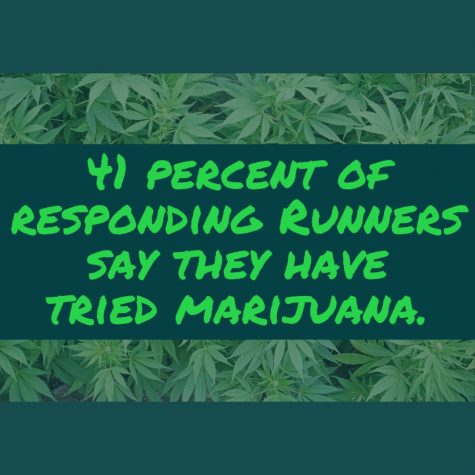
The poll was hosted on The Runner’s Instagram.
Like cigarettes, the actual marijuana smoke has created concerns for doctors and medical scientists around the globe. As burning anything creates carcinogens, researchers are currently trying to understand the relationship between marijuana smoke and lung diseases.
According to the American Lung Association’s website, the most common lung ailment caused by smoking marijuana is bronchitis. As the smoke inhalation damages the cells, the respiratory system is forced to work harder to recover from daily activities. The use of water pipes can also increase the risk of pneumonia, as the process involves breathing in moisture along with the marijuana smoke.
Aside from the concerns surrounding the potential long-term effects smoking on the respiratory system, medical experts have raised concerns about individuals using marijuana to avoid receiving medical treatment. This could include using marijuana as a substitute for medications intended to stabilize mood disorders or choosing to smoke for pain relief instead of receiving a recommended surgery. It is important consumers understand that cannabis, especially THC, cannot replace many needed medications. It is necessary to speak with your medical care team before changing medications.
Methods of consumption
Joints and blunts
As one of the most recognizable marijuana consumption methods, joints and blunts are typically some of the first forms many consumers try.
Joints are defined as ground marijuana that has been rolled in tobacco-free paper, such as hemp paper. In comparison, blunts are typically rolled in tobacco leaves, cigar wrappers, or blunt wraps. These methods of consumption will result in a high that takes effect quickly, and typically lasts four hours or less.
However, it is important that consumers consider the potential negative effects of each method of consumption. In the case of blunts and joints, the smoking process does involve breathing in burnt paper. Like breathing in the paper on a cigar or cigarette, the process creates carcinogens.
This method will typically provide the harshest of flavors, as the taste typically reflects the burning process. Likewise, many consumers will warn that the type and quality of rolling paper used will affect the flavor and overall quality. If you don’t mind the taste, or even if you just want something easily transportable, joints and blunts may still be the preferred way to find your buzz.
Traditional pipes
Another classic scene in stoner comedies includes traditional pipes, reflecting the popularity of the consumption method for more than a hundred years.
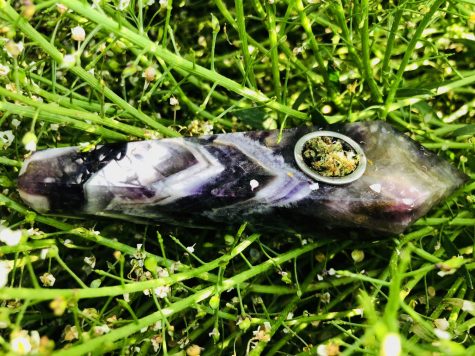
Pipes come in a variety of designs, including hand blown glass, mineral carvings, and more.
This process involves placing the marijuana in the bowl of the pipe, and burning the THC filled buds. Like smoking a joint, traditional pipes create a high that takes effect quickly and is shorter lived than edibles; the flavor will also reflect the burning process. Since it does involve burning the bud, carcinogens are still created in through this method.
Water pipes/bongs
Water pipes and bongs are highly popular among marijuana smokers.
As the smoke created by burning the buds placed in the bowl passes through water prior to reaching the lungs of the consumer, the smoke is thought to taste cleaner while achieving the same high when compared to other smoking methods. The water traps many of the carcinogens created during the smoking process, such as much of the ash itself, allowing consumers to reduce that specific risk.
Don’t be mistaken, however, as water pipes and bongs still come with their own risk. As the process involves breathing in the smoke as it filters through the water, moisture is regularly inhaled with it. Researchers currently believe that this can cause pneumonia, an illness that involves the buildup of fluid in the lungs, due to the water inhalation. It is currently unclear, however, how often bong-related pneumonia occurs.
Wax
Currently, one of the least understood methods of consumption is the use of wax. Wax is a sticky wax-like substance that is extremely concentrated; depending on the cannabis used to create the wax, it can contain hundreds of milligrams per gram. As a result, wax creates a heavy high that is not recommended for new consumers.
There are other subcategories of wax, including shatter and crumble. Each requires slightly different temperatures, all of which are much higher than the standard lighter can achieve. Wax is what is being used when discussing “dabbing,” a flash vaporization method. This typically involves using a mini torch to heat the wax while a metal rod, typically referred to as a “nail head”, is used to apply the wax to the bowl of the dab rig.
As concentrates such as wax have been growing in popularity primarily over the past decade or so, especially as states began to legalize medicinal marijuana, it is still extremely unclear how this effects the body. As the process involves heating the wax, concerns of carcinogens have been raised.
Vape pens and concentrates
At this time, research is still needed to determine the overall effect of vaping on the human body. Vaping includes heating distillates or wax, typically coming in 0.5 gram and 1 gram cartridges that are connected to portable self-heating batteries. As this means the same concentrate is heated repeatedly, it is unclear what the relationship between vaping and carcinogens is. This uncertainty is then added to by an abundance of bootleg cartridges flooding the market, including some that are formulated with harmful substances. It is also unclear what the suspension agents and preservatives used may do to the human body, such as the vitamin E used by many illegal distributors.
Despite the concerns surrounding vaping, the quick-acting method has remained popular among frequent consumers. Marijuana vape cartridges can be strain specific, allowing consumers to be more aware of the likely outcomes of the high.
Vapes are also primarily scentless when made by legitimate companies, making them discreet for those who choose to take their vape products with them on the go. Be sure to be aware of the laws for the locations you intend to take your product though, as it is illegal to have marijuana at most locations other than at home.
Edibles
Cannabis-infused dishes have been a favorite for more than a century, especially in the form of traditional pot brownies and cakes. Edibles can take several hours to take effect, and typically produce the longest lasting high compared to other consumption methods. This is also a reliable alternative for someone who wants to measure the amount of THC consumed per usage, or just doesn’t want to smoke the product to experience the effects.
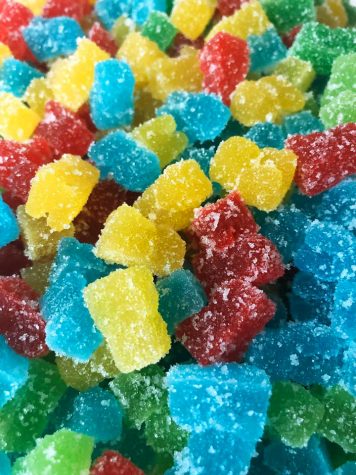
Edibles come in a variety of forms, including popular candies.
Due to the limited research available about marijuana consumption, it is unclear how eating cannabis may negatively impact the human body. At this time, the biggest concern raised by doctors has included the impact on dietary choices and its potential appeal to children. The marijuana industry has responded by requiring producers to include large warning labels, child resistant packaging, and special storage in states like California.
For those with children, it is required in most states that all marijuana is kept locked up and out of the children’s reach to prevent accidental consumption. It is also highly recommended that edibles are safely kept out of pets’ reach, as edibles have been found to make many animals ill.
Tinctures and syrups
For those who don’t want to smoke but need faster relief than edibles can provide, tinctures and syrups are a reliable way to go. This involves consuming the concentrated oils that are obtained from the cannabis plant. These oils will begin taking effect with a single use, or can be built upon with daily consumption to maintain the benefits.
Topicals
One of the less discussed consumption methods includes topicals, such as medicated lotions, bath bombs, and lip balms. These infused products are not intended to create a high for consumers; instead, these products are typically used for minor pain relief.
These products are dependent on the skin absorbing the marijuana’s oils, so there is no current concern about carcinogens in this form. However, topicals are not typically intended to help with mental health.
Runners and reefer
Runners reported choosing to use marijuana for a variety of reasons, including to help maintain their health.
“I do not actually like the head change so much. I need pain relief mostly. I find edible gummies allow me to gauge the milligrams I am taking, and adjust the dosing accordingly so I’m not completely blown,” Jennifer B., a junior anthropology major, wrote on a social media forum.
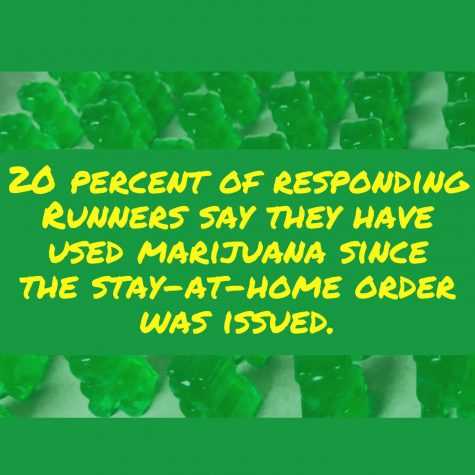
The poll was hosted on The Runner’s Instagram.
Senior psychology major Yaritza C. explains in a private message with The Runner staff that cannabis use has fond that it enhances her spiritual health.
“I prefer smoking hybrid strains with a bong and smoking lightly on the weekends before doing spiritual practices such as praying, working with tarot, and doing guided meditations. I believe it heightens my understanding on spiritual topics. For this reason, I moderate my intake and limit myself 2-3 small hits,” Yaritza elaborated.
Others choose to participate simply for pleasure.
“I prefer to smoke out of joints or out of a pipe. I mostly use it for relaxation, hunger, and trying to get lit,” Alyssa B., a senior criminal justice major, privately messaged The Runner.
Cannabis consumption is a very personal experience; everyone has their own preferred methods and goals. Whether someone participates for health reasons, pleasure, or not at all, the most important aspect is that the consumer medicates safely.



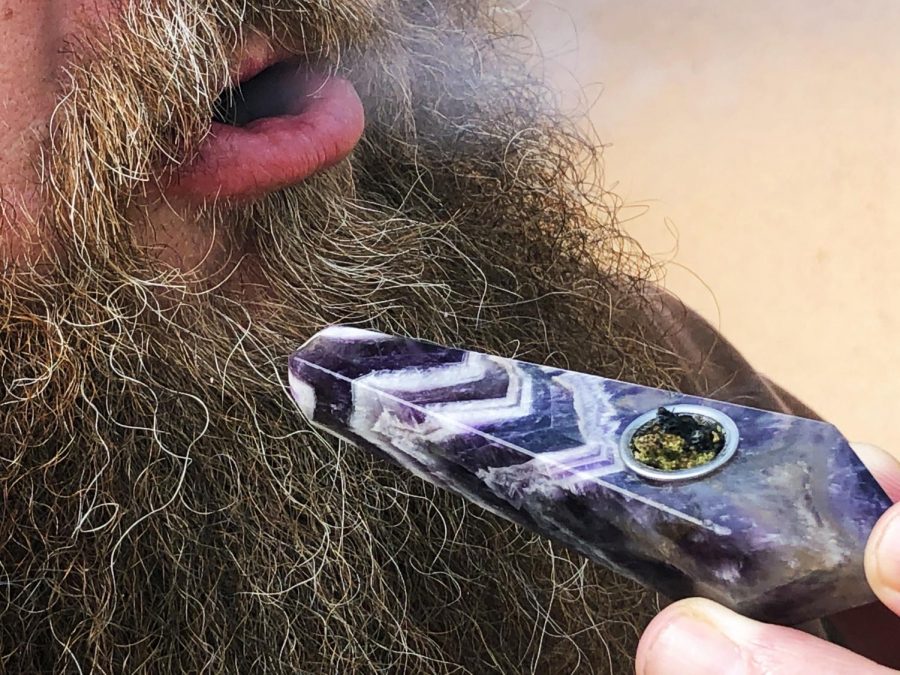







Jacob Whittaker • Apr 21, 2020 at 10:28 am
Liked the objective tone of the article and learned some things I didn’t know. I’m not really interested in trying it again, at this stage of my life, but it’s good to have an update on how people are using it and why, and what experiences they are having with it, since it is increasingly in the open these days.
Susan • Apr 21, 2020 at 10:24 am
I really enjoyed this article. It was very well written and researched. I know very little about weed, other than the smell has always made me nauseous, and now I know more! Although more research clearly needs to be done in the scientific world. There’s so many different kinds and things it can be mixed in, I had no idea!!!!! Of course, it doesn’t help I was raised by a strict retired cop that calls it a gateway drug. So all I heard was everything negative. But what I’ve found is that it’s not the weed that’s the problem, it’s other stuff taken with it, in addition to the individual taking it.